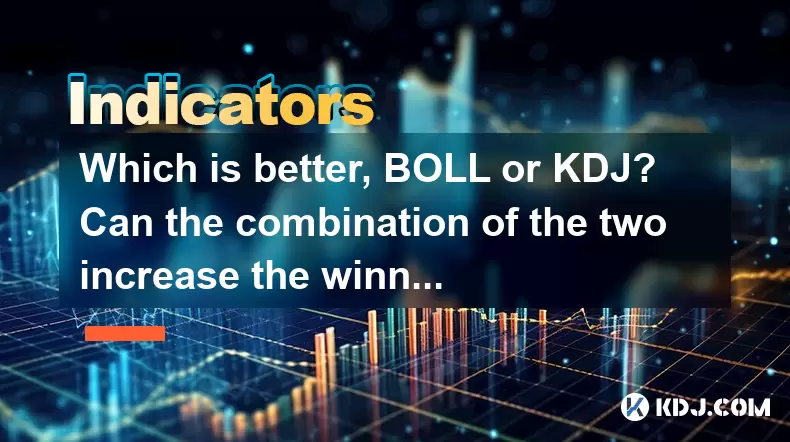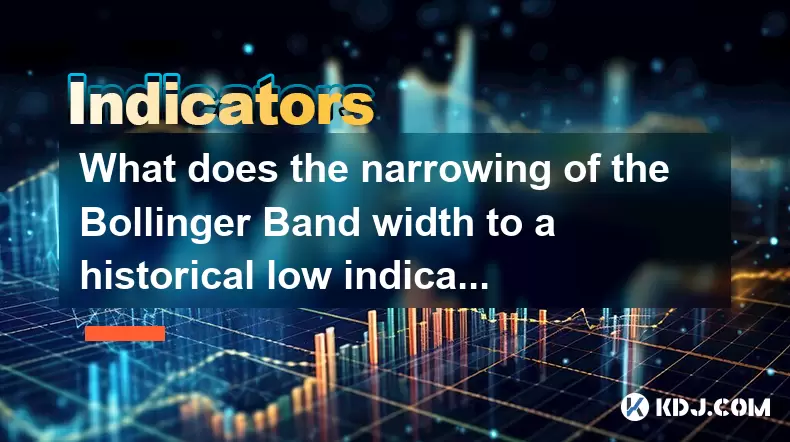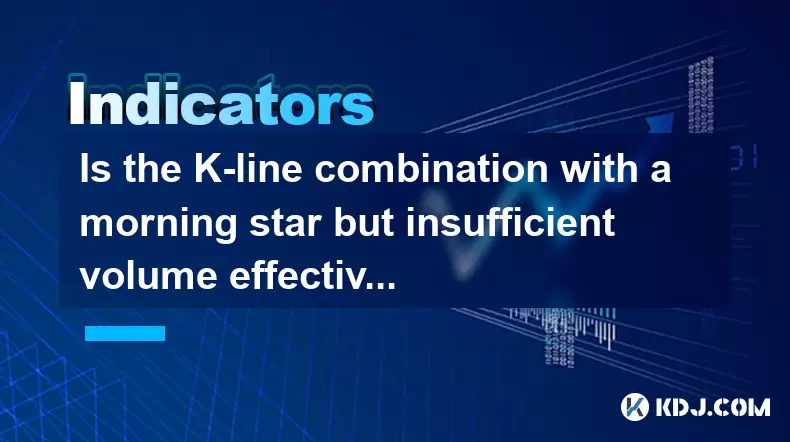-
 Bitcoin
Bitcoin $102,936.6333
3.84% -
 Ethereum
Ethereum $2,303.2860
5.42% -
 Tether USDt
Tether USDt $1.0008
0.05% -
 XRP
XRP $2.0592
5.18% -
 BNB
BNB $630.3035
4.07% -
 Solana
Solana $139.0485
7.91% -
 USDC
USDC $1.0000
0.01% -
 TRON
TRON $0.2722
3.17% -
 Dogecoin
Dogecoin $0.1572
6.30% -
 Cardano
Cardano $0.5543
5.37% -
 Hyperliquid
Hyperliquid $37.0789
8.94% -
 Bitcoin Cash
Bitcoin Cash $454.8827
2.38% -
 Sui
Sui $2.6088
10.94% -
 UNUS SED LEO
UNUS SED LEO $9.0751
0.81% -
 Chainlink
Chainlink $12.1078
6.95% -
 Stellar
Stellar $0.2351
5.76% -
 Avalanche
Avalanche $17.1771
7.35% -
 Toncoin
Toncoin $2.8438
5.50% -
 Shiba Inu
Shiba Inu $0.0...01112
7.74% -
 Litecoin
Litecoin $82.9385
5.91% -
 Hedera
Hedera $0.1409
8.82% -
 Ethena USDe
Ethena USDe $1.0006
0.01% -
 Monero
Monero $301.2470
1.77% -
 Dai
Dai $1.0001
0.01% -
 Polkadot
Polkadot $3.2751
3.88% -
 Bitget Token
Bitget Token $4.0623
2.00% -
 Uniswap
Uniswap $6.5652
8.27% -
 Pepe
Pepe $0.0...09287
7.77% -
 Pi
Pi $0.5146
6.32% -
 Aave
Aave $242.0173
11.35%
Which is better, BOLL or KDJ? Can the combination of the two increase the winning rate?
Bollinger Bands and KDJ can be combined to enhance crypto trading accuracy, but traders should also consider market sentiment and use proper risk management.
May 22, 2025 at 10:15 pm

In the world of cryptocurrency trading, technical analysis plays a crucial role in helping traders make informed decisions. Among the numerous indicators available, the Bollinger Bands (BOLL) and the KDJ indicator are two widely used tools. This article will explore the strengths and weaknesses of both indicators, analyze their effectiveness in cryptocurrency trading, and discuss whether combining them can increase the winning rate.
Understanding Bollinger Bands (BOLL)
Bollinger Bands, developed by John Bollinger, are a volatility indicator that consists of a middle band being a simple moving average (SMA) and two outer bands that are standard deviations away from the SMA. The default settings for Bollinger Bands are typically a 20-period SMA and two standard deviations.
In cryptocurrency trading, Bollinger Bands are used to identify overbought and oversold conditions. When the price touches the upper band, it may indicate that the asset is overbought, and a potential reversal could be imminent. Conversely, when the price touches the lower band, it may signal an oversold condition, suggesting a potential upward movement.
The key advantage of Bollinger Bands is their ability to adapt to market volatility. The bands widen during periods of high volatility and contract during times of low volatility, providing a dynamic view of price action. However, one limitation of Bollinger Bands is that they can sometimes generate false signals, especially in trending markets where prices can remain overbought or oversold for extended periods.
Understanding the KDJ Indicator
The KDJ indicator, also known as the Stochastic Oscillator, is a momentum indicator that measures the relationship between a closing price and its price range over a specific period. The KDJ consists of three lines: K, D, and J. The K and D lines are similar to the %K and %D lines in the standard Stochastic Oscillator, while the J line is a more sensitive version of the K line.
In cryptocurrency trading, the KDJ indicator is used to identify potential trend reversals and overbought/oversold conditions. When the K and D lines cross above 80, it suggests that the asset is overbought, and a potential downward reversal could occur. Conversely, when the K and D lines cross below 20, it indicates an oversold condition, signaling a potential upward reversal.
The KDJ indicator is particularly useful in identifying short-term price movements and can be effective in range-bound markets. However, like Bollinger Bands, the KDJ can also produce false signals, especially in strong trending markets where prices can remain in overbought or oversold territory for extended periods.
Comparing BOLL and KDJ: Which is Better?
Determining which indicator is better, BOLL or KDJ, depends on the trader's strategy and the specific market conditions. Bollinger Bands are more suited for traders who focus on volatility and trend-following strategies. The dynamic nature of the bands makes them effective in identifying potential breakouts and reversals in trending markets.
On the other hand, the KDJ indicator is better suited for traders who focus on short-term momentum and range-bound markets. The KDJ's sensitivity to price movements makes it effective in identifying potential reversals within a short time frame.
In terms of ease of use, Bollinger Bands are generally considered simpler to interpret, as they provide a clear visual representation of price volatility. The KDJ, however, requires a bit more understanding of its components and the relationships between the K, D, and J lines.
Can Combining BOLL and KDJ Increase the Winning Rate?
Combining Bollinger Bands and the KDJ indicator can potentially increase the winning rate by providing a more comprehensive view of market conditions. By using both indicators together, traders can gain insights into both volatility and momentum, which can help in making more informed trading decisions.
Here are some ways to combine BOLL and KDJ effectively:
- Confirming Signals: Use Bollinger Bands to identify potential overbought or oversold conditions, and then use the KDJ to confirm these signals. For example, if the price touches the upper Bollinger Band and the KDJ lines cross below 80, it could be a strong indication of a potential downward reversal.
- Identifying Breakouts: Use Bollinger Bands to identify potential breakouts from consolidation periods. When the price breaks out of the bands, use the KDJ to confirm the momentum of the breakout. If the KDJ lines are moving in the same direction as the breakout, it could indicate a strong trend continuation.
- Filtering False Signals: Use the KDJ to filter out false signals generated by Bollinger Bands. For instance, if the price touches the lower Bollinger Band but the KDJ lines are still above 20, it could suggest that the oversold condition is not yet confirmed, and the price may not reverse as expected.
By combining these two indicators, traders can potentially reduce the number of false signals and increase the accuracy of their trading decisions. However, it's important to remember that no indicator is foolproof, and combining indicators does not guarantee success. Traders should always use proper risk management and consider other factors such as market sentiment and fundamental analysis.
Practical Application of BOLL and KDJ in Cryptocurrency Trading
To apply Bollinger Bands and the KDJ indicator in cryptocurrency trading, follow these steps:
- Select a Cryptocurrency: Choose a cryptocurrency that you want to trade. Popular options include Bitcoin (BTC), Ethereum (ETH), and Litecoin (LTC).
- Set Up Your Chart: Open your trading platform and set up a chart for the selected cryptocurrency. Ensure that you have access to both Bollinger Bands and the KDJ indicator.
- Configure Bollinger Bands: Add Bollinger Bands to your chart with the default settings (20-period SMA and two standard deviations).
- Configure KDJ Indicator: Add the KDJ indicator to your chart with the default settings (typically a 9-period %K and a 3-period %D).
- Analyze the Chart: Look for potential trading opportunities based on the signals provided by both indicators:
- Overbought/Oversold Conditions: Watch for the price touching the upper or lower Bollinger Band and the KDJ lines crossing above 80 or below 20, respectively.
- Breakouts: Monitor for price breakouts from the Bollinger Bands and confirm the momentum with the KDJ lines.
- Divergence: Look for divergences between the price action and the KDJ lines, which can signal potential reversals.
- Execute Trades: Based on your analysis, enter trades when both indicators confirm a strong signal. For example, if the price touches the lower Bollinger Band and the KDJ lines cross above 20, it could be a good opportunity to enter a long position.
- Monitor and Adjust: Continuously monitor your trades and adjust your strategy as needed. Be prepared to exit trades if the market conditions change or if your stop-loss levels are hit.
Frequently Asked Questions
Q1: Can Bollinger Bands and KDJ be used for all cryptocurrencies?
A1: Yes, Bollinger Bands and the KDJ indicator can be used for all cryptocurrencies. However, their effectiveness may vary depending on the liquidity and volatility of the specific cryptocurrency. For more liquid assets like Bitcoin and Ethereum, these indicators tend to be more reliable.
Q2: How often should I adjust the settings of Bollinger Bands and KDJ?
A2: The default settings for Bollinger Bands and the KDJ indicator are generally effective for most trading scenarios. However, you may need to adjust the settings based on the specific cryptocurrency and time frame you are trading. For short-term trading, you might consider using shorter periods for both indicators, while for longer-term trading, longer periods may be more suitable.
Q3: Are there any other indicators that can be combined with BOLL and KDJ to improve trading performance?
A3: Yes, other indicators such as the Relative Strength Index (RSI), Moving Average Convergence Divergence (MACD), and the Average Directional Index (ADX) can be combined with Bollinger Bands and the KDJ to provide additional insights. For example, using the RSI to confirm overbought/oversold conditions identified by the KDJ, or using the ADX to gauge the strength of a trend identified by Bollinger Bands, can enhance your trading strategy.
Q4: How can I avoid over-reliance on technical indicators when trading cryptocurrencies?
A4: To avoid over-reliance on technical indicators, it's important to use them as part of a broader trading strategy that includes fundamental analysis and market sentiment. Additionally, always practice proper risk management by setting stop-loss orders and not risking more than you can afford to lose. Combining technical analysis with other forms of analysis and maintaining a disciplined approach to trading can help you make more well-rounded decisions.
Disclaimer:info@kdj.com
The information provided is not trading advice. kdj.com does not assume any responsibility for any investments made based on the information provided in this article. Cryptocurrencies are highly volatile and it is highly recommended that you invest with caution after thorough research!
If you believe that the content used on this website infringes your copyright, please contact us immediately (info@kdj.com) and we will delete it promptly.
- Crypto Penny Coins: Hunting for Monster Gains in 2025
- 2025-06-24 02:45:12
- Ethereum Whale Dips Into Crashing ETH: Smart Move?
- 2025-06-24 02:25:12
- Shiba Inu vs. Rival Tokens: Navigating the Cryptocurrency Craze in NYC
- 2025-06-24 03:10:22
- Stablecoin Scramble: Market Structure and Bill Passage in the Crypto Wild West
- 2025-06-24 02:45:12
- Circle Stock Soars: Surpassing USDC Market Cap After GENIUS Act Boost
- 2025-06-24 03:10:22
- Pepe Coin's Open Interest Hints at Potential Rally: A Trader's Guide
- 2025-06-24 02:50:12
Related knowledge

How to interpret that the time-sharing chart shows "volume and price rise together" but the MACD red column shortens?
Jun 24,2025 at 01:08am
Understanding the Concept of 'Volume and Price Rise Together'In cryptocurrency trading, when a time-sharing chart shows that both volume and price rise together, it is typically interpreted as a sign of strong buying pressure. This means more traders are entering long positions, pushing the price higher while increasing the trading volume. This phenomen...

Is it contradictory that the moving average system is arranged in a bullish pattern but the DMI shows a decline in trend strength?
Jun 23,2025 at 11:43pm
Understanding the Moving Average and DMI RelationshipIn cryptocurrency trading, technical analysis plays a crucial role in identifying potential trends and making informed decisions. Two of the most commonly used indicators are the Moving Average (MA) and the Directional Movement Index (DMI). While both tools aim to provide insight into market direction...

How to interpret that the Williams indicator quickly turns back in the overbought area but does not fall below the 50-axis?
Jun 24,2025 at 02:01am
Understanding the Williams %R Indicator in Cryptocurrency TradingThe Williams %R indicator, often referred to as Williams Percent Range, is a momentum oscillator used by traders to identify overbought or oversold conditions in financial markets, including cryptocurrency. It ranges from 0 to -100, where values above -20 are considered overbought and thos...

What is the significance of the gap formed by the gap opening not being filled within five days?
Jun 23,2025 at 09:42pm
Understanding Gaps in Cryptocurrency TradingIn the world of cryptocurrency trading, a gap refers to a situation where the price of an asset jumps from one level to another without any trading activity occurring between those two levels. This often happens over weekends or holidays when the market is closed, and significant news or events occur that impa...

What does the narrowing of the Bollinger Band width to a historical low indicate?
Jun 24,2025 at 02:35am
Understanding Bollinger Bands and Their Role in Technical AnalysisBollinger Bands, developed by John Bollinger in the 1980s, are a popular technical analysis tool used to measure market volatility. They consist of three lines: a simple moving average (SMA) in the center, typically over a 20-period setting, and two outer bands that are set at a standard ...

Is the K-line combination with a morning star but insufficient volume effective?
Jun 24,2025 at 02:49am
Understanding the Morning Star K-line PatternThe morning star is a classic candlestick pattern indicating a potential reversal from a downtrend to an uptrend. It consists of three candles: a large bearish candle, followed by a small-bodied candle (often a doji or spinning top), and then a large bullish candle that closes within the range of the first ca...

How to interpret that the time-sharing chart shows "volume and price rise together" but the MACD red column shortens?
Jun 24,2025 at 01:08am
Understanding the Concept of 'Volume and Price Rise Together'In cryptocurrency trading, when a time-sharing chart shows that both volume and price rise together, it is typically interpreted as a sign of strong buying pressure. This means more traders are entering long positions, pushing the price higher while increasing the trading volume. This phenomen...

Is it contradictory that the moving average system is arranged in a bullish pattern but the DMI shows a decline in trend strength?
Jun 23,2025 at 11:43pm
Understanding the Moving Average and DMI RelationshipIn cryptocurrency trading, technical analysis plays a crucial role in identifying potential trends and making informed decisions. Two of the most commonly used indicators are the Moving Average (MA) and the Directional Movement Index (DMI). While both tools aim to provide insight into market direction...

How to interpret that the Williams indicator quickly turns back in the overbought area but does not fall below the 50-axis?
Jun 24,2025 at 02:01am
Understanding the Williams %R Indicator in Cryptocurrency TradingThe Williams %R indicator, often referred to as Williams Percent Range, is a momentum oscillator used by traders to identify overbought or oversold conditions in financial markets, including cryptocurrency. It ranges from 0 to -100, where values above -20 are considered overbought and thos...

What is the significance of the gap formed by the gap opening not being filled within five days?
Jun 23,2025 at 09:42pm
Understanding Gaps in Cryptocurrency TradingIn the world of cryptocurrency trading, a gap refers to a situation where the price of an asset jumps from one level to another without any trading activity occurring between those two levels. This often happens over weekends or holidays when the market is closed, and significant news or events occur that impa...

What does the narrowing of the Bollinger Band width to a historical low indicate?
Jun 24,2025 at 02:35am
Understanding Bollinger Bands and Their Role in Technical AnalysisBollinger Bands, developed by John Bollinger in the 1980s, are a popular technical analysis tool used to measure market volatility. They consist of three lines: a simple moving average (SMA) in the center, typically over a 20-period setting, and two outer bands that are set at a standard ...

Is the K-line combination with a morning star but insufficient volume effective?
Jun 24,2025 at 02:49am
Understanding the Morning Star K-line PatternThe morning star is a classic candlestick pattern indicating a potential reversal from a downtrend to an uptrend. It consists of three candles: a large bearish candle, followed by a small-bodied candle (often a doji or spinning top), and then a large bullish candle that closes within the range of the first ca...
See all articles
























































































